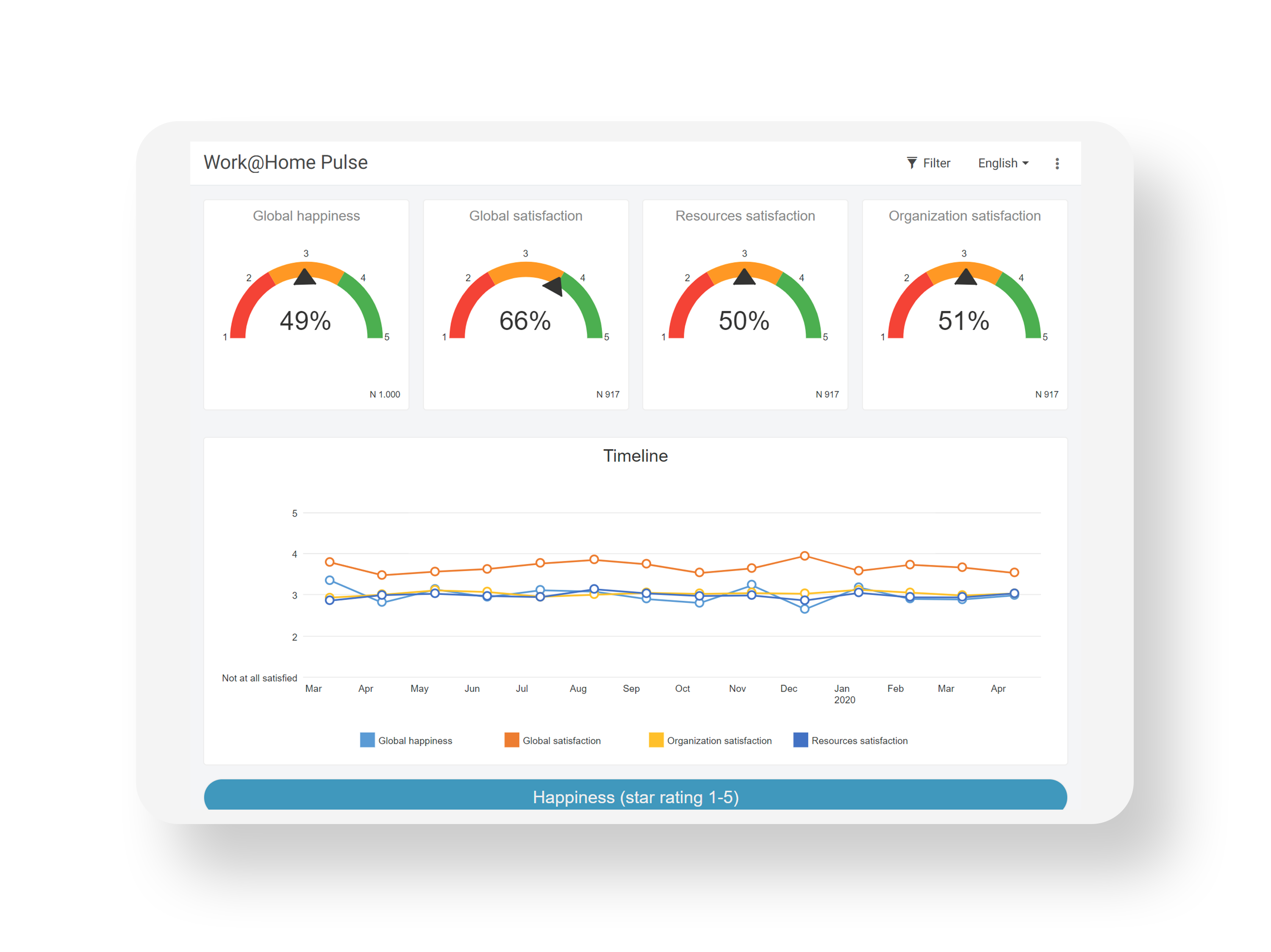It’s the year 2019, you see your colleagues every day at the office and complain about traffic around the water cooler. You’ve never heard of Zoom before and never even considered that not wearing pants while working was an option.
Well, a lot has changed and it looks like we will be working from home for quite some time. This shouldn’t be a bad thing. Because, even though you might miss working at your office, studies show that employees do enjoy the lack of commuting and experience an increase in productivity. On top of that, employers notice a decrease in turnover and costs.
Even though it is possible for many employees to do their job (partly) from home, managers find themselves struggling managing their newly remote team. To help you out, we’ve laid down our 5 best tips to keep your team motivated and aligned.
How to manage your employees working from home
1. Communication guidelines
If you thought clear communication at work was important before, we don’t need to explain how important it is when your team is working from home. You have to make up for the fact that your team can’t just ‘quickly ask you something’.
Clearly communicate to your employees when and how they can contact you. Write out some guidelines on which format is suitable for which situation. If it’s urgent and you need a response fast, sending an email is not the best idea. If you need to have a more structured discussion, a planned video chat might work better. Writing down a few guidelines will make communication so much easier, especially with all the technology available nowadays.
2. Clear expectations
Employees working from home are more in control of how they structure their day. That’s why it is important to set clear expectations. This does not only include the tasks they need to do but also for example the hours they need to be available. Is it necessary that your employees work during the official office hours or do they have more flexibility? Do you expect your employees to give you daily updates on their work?
Make sure your team knows what they need to do and when they have to do it. If you don’t clearly communicate your expectations, your employees will probably never meet them.
3. Hold weekly/daily check-ins
Maybe you didn’t hold many official meetings with your team while you were working in the office, you’d be surprised how much you discuss during the day if you all work at the same place. Weekly or daily check-ins to go over day-to-day activities will help your employees feel less isolated and give them more appreciation for the work they do. It’s also a quick way to bring everyone up to speed about how things are going. They don’t need to take up a lot of time but they do give your employees the opportunity to talk about what’s on their mind. Scheduling 15 minutes at the start or end of each working day will do wonders for the productivity and involvement of your team.
4. Encourage engagement
When your employees are not used to working from home, they might feel isolated when they suddenly don’t see their colleagues on a daily basis anymore. Their motivation might tank so it is important to remind your team what they are doing it for. Engagement is key for success so make sure everyone is involved and still feels like they belong to the team.
There are many ways to encourage engagement and make your employees feel more included. Think about holding virtual lunch dates or Friday afternoon drinks. Talk with your employees about something which is not work related so you don’t lose the personal connection. Also, don’t forget to reward your team when things are going well. Probably the easiest way to make someone feel appreciated is a simple compliment.
5. Use a pulse survey
Pulse surveys are very short surveys used to track your employees happiness, satisfaction and whether they have all resources needed to do their job accordingly. If you’re worrying about forgetting to check in with your employees enough, a pulse survey can do the work for you. Regularly conducting a pulse survey will keep you informed about how your employees are doing. Keep the pulse survey short and concise so it doesn’t take too much effort for your employees to fill in.
At CheckMarket, we can help you to keep your finger on the pulse. With our Work@Home Pulse survey template you can easily track how your employees are doing. Our clear reporting tool with a top-down approach gives you a bird’s-eye view so that you can quickly respond to specific needs or problems. Our easy notification system allows you to get instant notified so you can take real-time action.
You want to keep your pulse survey short & effective but also give the opportunity to your employees to explain in detail why they are feeling a certain way. But analyzing open-ended questions might take some time. That’s why we have created an easy to use text analysis tool. You can apply sentiments (negative, neutral or positive) to identify the underlying feeling. Use CheckMarket’s built-in automatic tagging to categorize open-ended survey questions as they come in.
Conclusion
Managing a remote team asks for a different approach but with these 5 tips, you’ll come a long way. Give your team the flexibility to structure their own day, check in regularly & make sure everything is clear to everyone. And lastly, do make sure that you’re not micromanaging. The base of managing a remote team lays with trust.



Leave a Reply